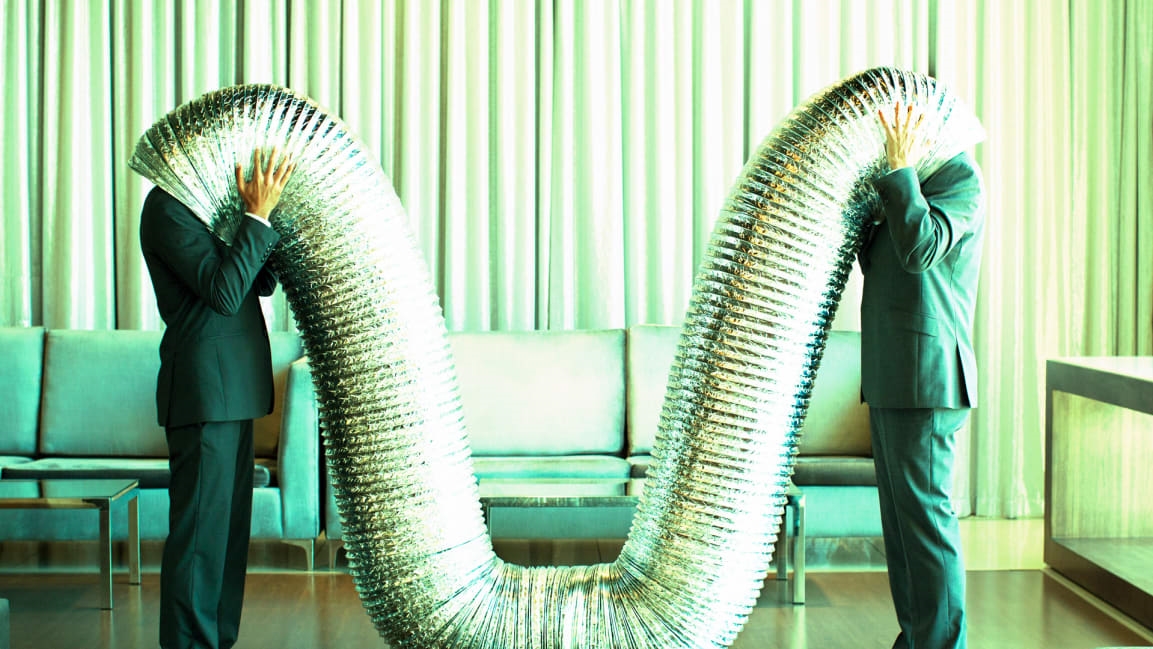We’re sick of ‘circling back.’ Here’s how to be less annoying communicating at work
By Jaime DeLanghe
How many Zoom meetings and/or happy hours have you joined since 2020? Does it grate on you when someone says “You’re muted!” or “Can you confirm receipt?” Have you not seen the inside of your office since March 2020?
There’s no question that the way we work has changed dramatically since the start of the pandemic—not just where we physically work but also how we work and communicate with one another. And if we’re being honest with ourselves, we can admit the transition to remote and hybrid work wasn’t easy for a lot of people.
We’ve all had to adapt as many companies have moved to a remote or hybrid work model that replaces physical office spaces with a digital headquarters. Part of that transition has included the adoption of channel-based collaboration technology to enable and enhance work-related tasks and to keep people connected.
Maintaining connection cannot be overlooked from the day-to-day. Gallup research has found that those who have strong work relationships are more engaged, produce higher-quality work, and have a higher state of well-being. This leads to the question: As we continue this digital-first way of working where teams are distributed, how can we ensure our interactions remain both productive and engaging, yet still personable?
It’s my job to develop Slack to better suit the evolving needs of our increasingly digital work world. A big part of doing that job well is to make sure that I, and the greater Slack team, can maintain authentic, human connections with our customers and one another. So, it’s no surprise that I’m extremely interested in exploring the ways individuals are changing the way we communicate to meet the needs of a remote and hybrid work setting.
According to new research by OnePoll, almost half of Americans have a colleague they find difficult to work with, due to their communication habits. In my own experience working remotely for the past couple years, I’ve come to appreciate that everyone has a different communication style, and it’s critical to meet people where they are. Below are three key takeaways that can improve work communication in a digital-first work setting.
Limit workplace jargon
The OnePoll survey of 2,000 remote and hybrid workers revealed that the reason almost half of Americans find a colleague difficult to work with may be a result of coworkers’ use of workplace jargon. We’re all guilty of peppering in business jargon such as “give it 100%” or “think outside the box,” and not surprisingly, those are among the terms that were ranked in the top 10 most overused phrases.
Channel-based communication platforms like Slack are reducing the need for email—and the etiquette that goes with it. I have found that it’s helpful to read over your message before hitting send to determine if there’s a better way of conveying your intent without using tired phrases that knowingly irritate recipients.
For example, instead of saying “think outside the box,” replace it with, “Let’s see if we can get more creative here.” By rephrasing and putting an emphasis on the team aspect of working together to find alternative ideas, you’ll avoid using clichés that opens the door for misinterpretation.
Slang and abbreviations are encouraged
It’s not only workplace jargon that can impact colleagues’ satisfaction levels with each other. Results of the study found that the level of formality can also have a huge impact in how we interact with each other in a positive way.
Survey results show using slang and abbreviations is actually encouraged: 70% prefer when their coworkers communicate informally or with slang versus staying strictly professional. The desire for informal communication has been especially true during the pandemic as 75% said showing their personality through work messages (using emoji, GIFs, etc.) has helped them better connect with colleagues while they’re not in the same office.
At Oscar Health, a direct-to-consumer health insurance company, every care team has a custom emoji, which is used as a “read receipt” on important announcements.
Being mindful of how you communicate can help foster a better workplace
In this new world of working where teams are distributed, it’s important to be thoughtful and intentional in how we choose to communicate with our coworkers of all backgrounds, locations, and ages to ensure they stay connected and engaged.
Seventy-eight percent said work messages that use language beyond jargon and professional-speak have made work feel more flexible, friendly, and inclusive; with 82% of millennials versus 68% of Gen-Xers agreeing. Millennials were also more likely to agree that informal messages helped them to avoid miscommunications and better understand intent while working separately from their colleagues—73%, versus 57% of Gen-Xers.
By using communication tools in a digital setting, colleagues can enjoy emotive shorthand with emoji and GIFs, plus more informal back-and-forths than those found with email. As companies from Cole Haan to T-Mobile, Procore to Stripe use these tools, this trend is permeating all industries.
A stellar example of the ways communication tools can help foster connection and understanding in a digital space can be seen at Expedia. In the absence of verbal cues, employees at Expedia lean on Slack statuses and emoji to indicate when someone is online but heads down working on something critical or offline in need of a break.
They also take advantage of Slack’s custom emoji to show what different mood levels could mean for employees with mood disorders or other mental health challenges, and to add richness to self-expression.
The way we work and engage with one another is changing from the old professional norms we once knew, for the better. We have more tools and resources than ever to work smarter, more efficiently and in a more human manner, wherever we are.
And with less than 30% of global knowledge workers working from the office every day, according to a Future Forum Pulse survey late last year, it’s clear that the trend towards a digital-first work world is here to stay.
Jaime DeLanghe is senior principal, Product Management at Slack.
Fast Company , Read Full Story
(100)



